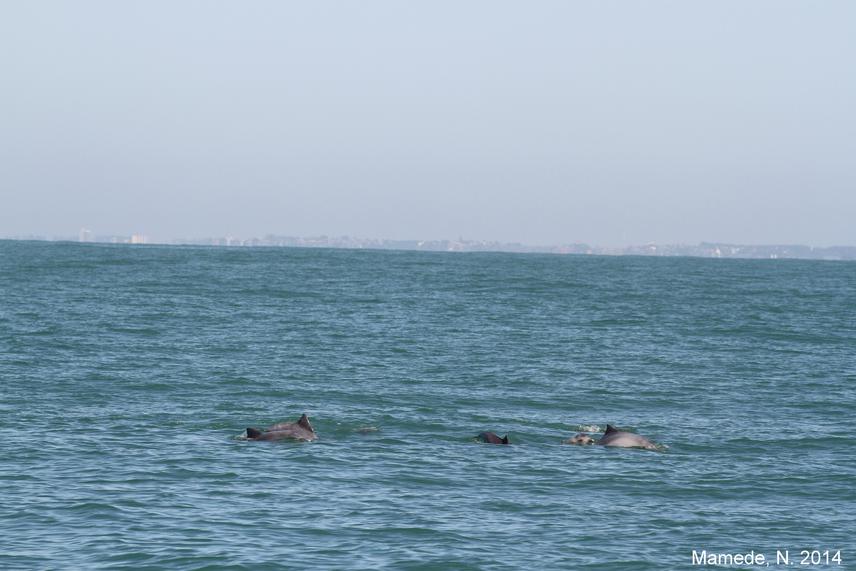Natália dos Santos Mamede
Our aim is to understand how Guiana dolphin uses this area, either through their behaviour and preferences, as well as know their individuals and how many.

In this study, we will assess behaviour, habitat characteristics and estimate abundance of a small coastal dolphin population in Benevente Bay, Espírito Santo State, Brazil. The dolphin, Sotalia guianensis (Van Bénéden, 1864) can be found from Honduras to Santa Catarina, Brazil although, until the moment, we known it does not show long displacements (up to 28.97 km/day) and remaining on the same area all the year round. It is relatively small, the average size is 1.70 m and maximum is 2.20 m. The coloration is dark grey in the dorsal region and light grey to pink in the ventral region. It has a distinct line that goes from the rostrum passing through the limit of the pectoral fins. Guiana Dolphin is classified as Data Deficient (IUCN 2012) and investigation is needed to support conservation strategies. We sampling methods in a broad spatiotemporal scale associated with the environmental characterization.
This study is relevant under the conservation perspective due to the a few information about this species the Benevente Bay and Espírito Santo state, especially due to the expansion of anthropogenic activities in the area (new projects are planned for this area, as a seaport). In this context the Botos de Benevente project began its activities in 2011. The bay corresponds to a small coastal habitat between the Castelhanos beach at the city of Anchieta (20ºS; 40ºW) and Espigão beach at the city of Itaoca (21ºS;40ºW). Data collection will occur with a pre-defined or not path, with displacements along the study area on board a vessel. For each group found, we take as many pictures as possible, it is recorded the time and duration of the meeting, geographical location, group size; behaviour and group composition (number of pups, juveniles and / or adults). The locations obtained will be integrated into a geographic information system (GIS) study and develop models to explain the environmental context in which the estuarine dolphin is inserted in this bay.
This study will identify individuals in this population, through photo-identification methods, producing a catalogue of identifying information that could serve as a basis for future studies on the ecology and behaviour of the species in this bay; also make population estimates. The method will be used to estimate density and population size is the mark-recapture method, which is accomplished through photos of marks on the dorsal fin of individuals.